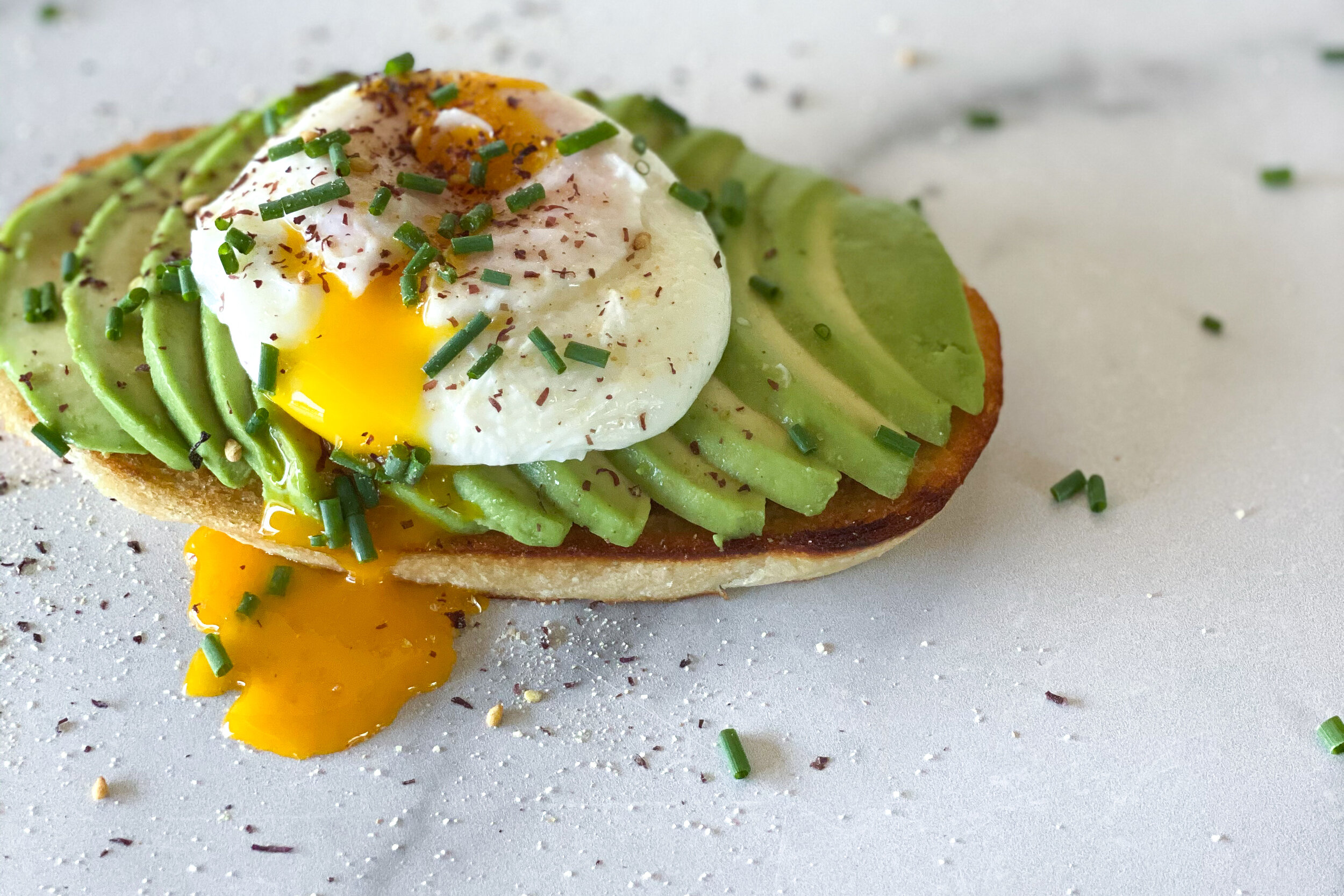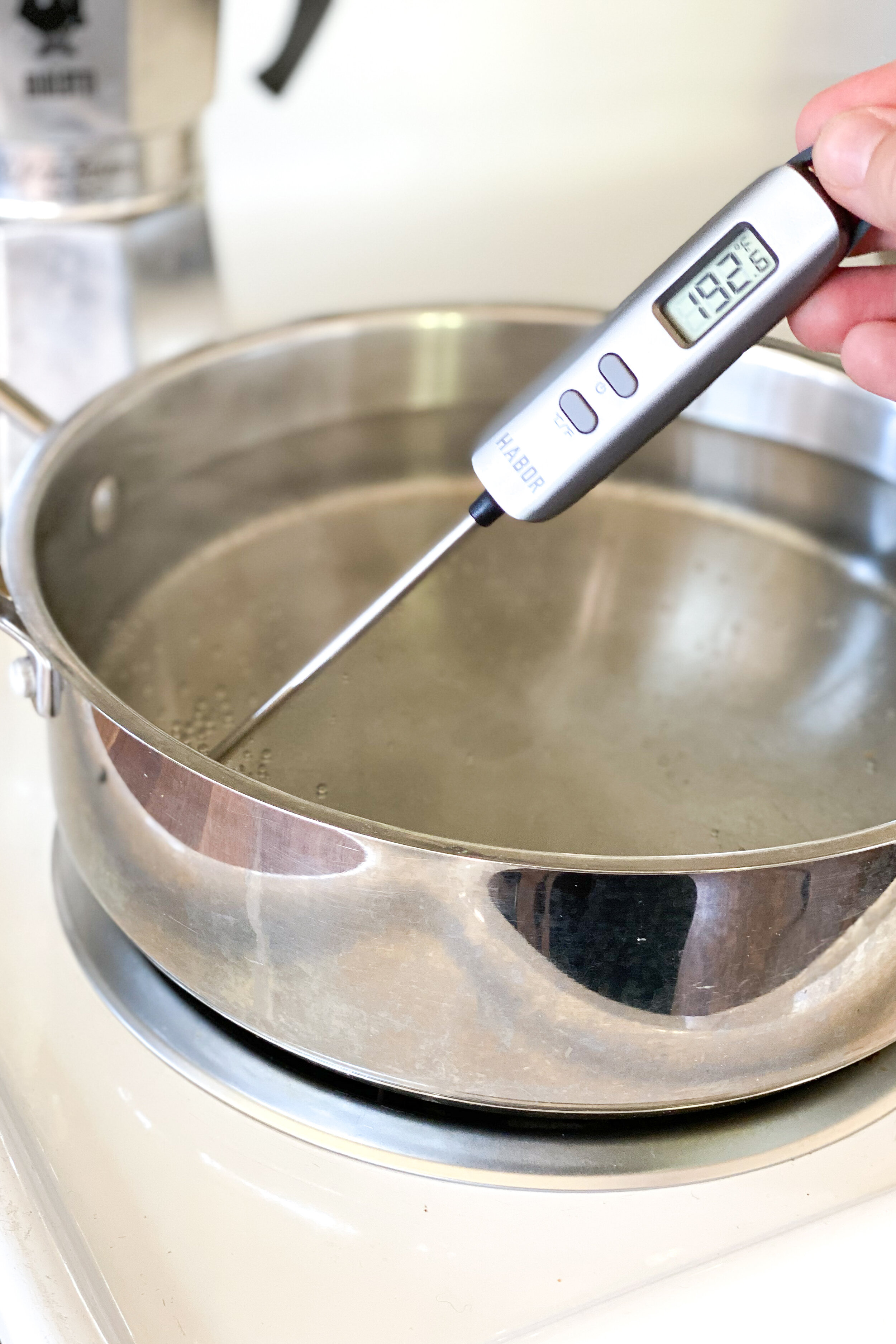How to: Poach An Egg
/There’s nothing better than a runny, buttery yolk from a perfectly poached egg! And, with this how-to you too can learn How to Poach an Egg perfectly in your home kitchen. Jump to recipe.
Poached eggs are seriously underrated. The unsung hero of brunch. Poached eggs can turn any dish into an unctuous, buttery, saucy thing of glory.
You’re smart + have great taste — so I know you’re over there ordering poached eggs at restaurants. But when it comes to poaching at home, I’m guessing you’re feeling a little stuck. Am I right?
In our house, brunch isn't brunch without poached eggs. Just enough luxury, not too terribly fussy, and super delicious on top of roasted asparagus, a piece of sourdough toast or dressed up with smoked salmon and hollandaise.
Even to a skilled home chef, there are certain cooking techniques that seem to feel inherently intimidating — grilling a medium-rare steak, baking a soufflé that doesn't collapse [still haven't mastered this one myself!], making hollandaise that doesn't break, and poaching the perfect egg.
And while there are plenty of gadgets you can use to streamline the at-home poaching process, you don't need a single one. I promise.
With this how-to you will learn how to poach an egg perfectly in your home kitchen!
There are two main methods that will allow you to get the perfect poach sans fancy gadgets — the vortex method and the no fuss method. And neither one involve using vinegar. Shocker, I know.
The Vortex Method: The traditional French method which calls for dropping an egg into a whirlpool of simmering water. This method works wonderfully if you’re only poaching a few eggs [think breakfast for two].
The No Fuss Method: This is, in my opinion, a foolproof method for cooking perfectly poached eggs. Simply strain and drop the eggs into barely simmering water and don’t touch anything for a few minutes. The only kicker is that you have to monitor the eggs and the temperature of the water a little more closely as the eggs cook. This is my go-to poaching method when we’ve got company or I’m cooking brunch for a crowd.
Some notes for the home chef before getting started:
Mise en place — a French term for "everything in its place" — is not just for the pros. As a home cook, mise en place is about having everything you need before you start cooking and it allows you to focus on the task at hand. Take a moment to organize + make sure you’ve got your eggs, strainer, thermometer, pan, and a clean kitchen towel ready to go so you’re able to focus on the process.
Use the freshest eggs possible. Fresh eggs have firmer whites and tend to hold their shape better, which means less whispies. Old eggs aren’t a deal breaker if you use the two methods below, but it does result in a much tidier + tastier poached egg.
Yes, you do need a thermometer. This is the moment as a home chef where you have to decide it’s finally time. This is the one I use for cooking and baking.
Cold eggs work best for both of the poaching methods below, but it’s important to note that cold eggs drop the water temperature. This is where the thermometer comes in handy! As you’re poaching, you can check the temp of the water to see if you need to adjust the burner heat.
Using a strainer or fine mesh sieve is key to preventing all those little whispies! It also allows you to forgo the vinegar which, in my opinion, results in a much tastier egg.
Cook Ahead Pro Tip: If you're making them ahead, poach as many eggs as needed and store the eggs in a sealed container of cold water. To reheat, simply place them in a bowl of hot water for 30-60 seconds before serving. I use this method when I’m making eggs benedict for a crowd and it works beautifully!
how to poach an egg — vortex method
There’s nothing better than a runny, buttery yolk from a perfectly poached egg! And, with this how-to you too can learn how to poach an egg perfectly in your home kitchen. This method works best if you’re only cooking for 1-2 people.
INGREDIENTS:
- 3 quart saucepan
- small fine mesh sieve & pinch bowl
- slotted spoon
- fresh, cold eggs
INSTRUCTIONS:
- Bring the water to a simmer (with bubbles forming on the bottom of the pan and only slight activity on the top). The water should be between 190-195 degrees Fahrenheit since the eggs will bring the water temp down to the optimal spot of about 180-185 degrees.
- Create a vortex of water with a spoon, crack the egg over a fine mesh sieve placed over the pinch bowl and gently slide it into the middle of the vortex directly from the seive. If you're making a bigger batch for meal prep or for a larger family, use the no fuss method below!
- Set a timer for 3 minutes, remove the egg from the water using the slotted spoon, and you've got a near-perfect poached egg. Let drain on a clean kitchen towel.
- Serve over dressed or sautéed greens, roasted vegetables, or a slice of toast.
NOTES:
how to poach an egg — no fuss method
There’s nothing better than a runny, buttery yolk from a perfectly poached egg! And, with this how-to you too can learn how to poach an egg perfectly in your home kitchen. This no fuss method is perfect if you’re poaching eggs for the whole family.
INGREDIENTS:
- 6 quart saute pan
- small fine mesh sieve & pinch bowl
- slotted spoon
- fresh, cold eggs
INSTRUCTIONS:
- Bring the water to a simmer (with bubbles forming on the bottom of the pan and only slight activity on the top). The water should be between 190-195 degrees Fahrenheit since the eggs will bring the water temp down to the optimal spot of about 180-185 degrees.
- Crack each egg, one at a time, over a fine mesh sieve placed over the pinch bowl to catch the runny part of the egg white. Transfer the eggs to a small bowl as you strain them.
- Gently slide the eggs into the pot with an inch or so in between. You can poach up to four eggs at a time in this liquid; work in batches for more. Keep in mind that throughout the process, both the eggs and the water should move as little as possible for this method.
- Set a timer for 4-5 minutes, remove the egg from the water using the slotted spoon when it's reached your desired texture, and you've got a near-perfect poached egg. Let drain on a clean kitchen towel.
- Serve over dressed or sautéed greens, roasted vegetables, or a slice of toast.
















